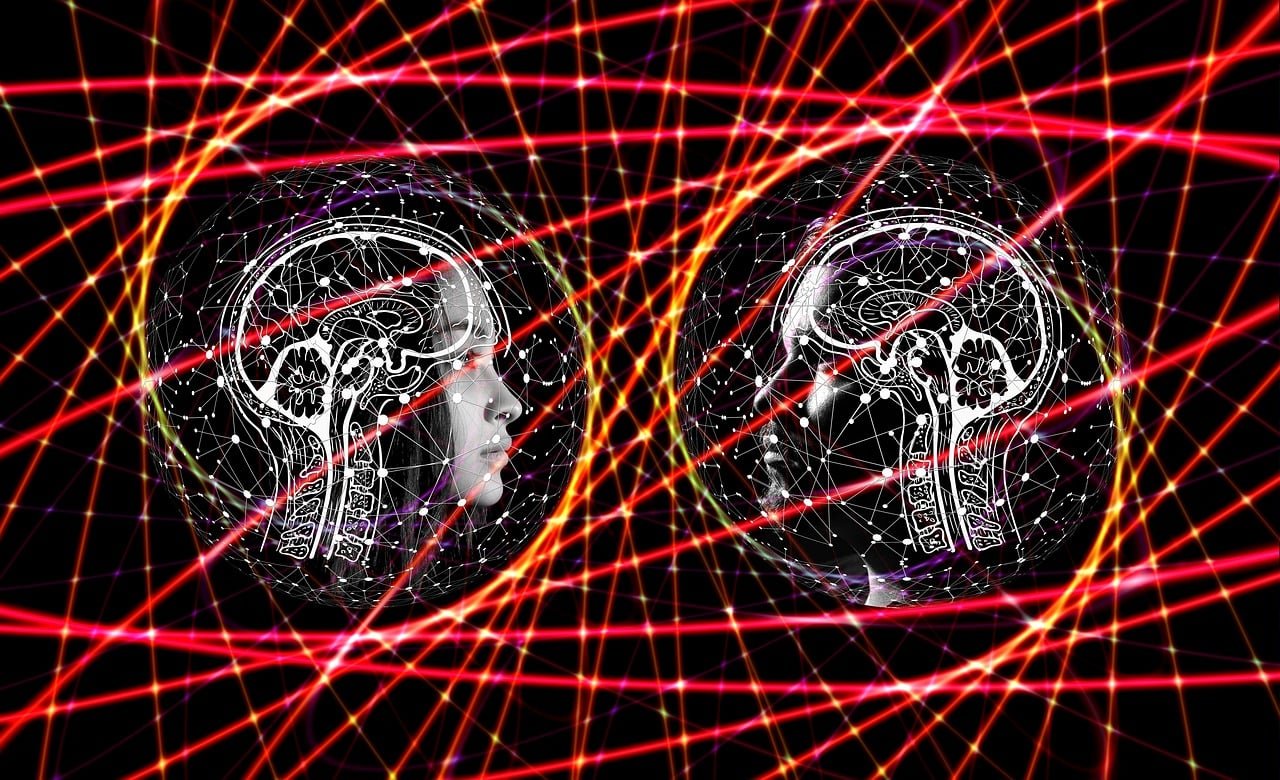Transcending Suffering Through Stoic Neurophilosophy
"The happiness of your life depends upon the quality of your thoughts" - Marcus Aurelius
Summary:
Ancient Wisdom Meets Modern Science: Discover how the timeless wisdom of Stoic philosopher Marcus Aurelius is reimagined in light of the latest advances in neuroscience and neurophilosophy.
Understanding Suffering: Gain insights into the Stoic perspective on suffering and how modern research helps us understand the neurobiological underpinnings of human suffering.
Resilience and Mindfulness: Learn how Stoic principles can empower you to build resilience and cultivate mindfulness in today's fast-paced world.
Bridging the Gap: Explore the interdisciplinary bridge between philosophy and neuroscience, uncovering the potential for a holistic approach to mental well-being.
Practical Takeaways: Walk away with actionable strategies and practices that combine Stoicism and neuroscience to transcend suffering and live a more meaningful life.
The Brain as Storyteller
Our Perspective Shapes Our Reality
Cognitive scientists reveal our brains continually craft narratives to interpret events.
"We experience life through the stories our minds tell us," explains psychologist Lisa Feldman Barrett (2017).
fMRI studies show these neural narratives activate similar regions as sensory experiences, becoming our perceived reality.
"Very little is needed to make a happy life; it is all within yourself, in your way of thinking."
Stoicism's Timeless Wisdom
Marcus Aurelius recognized this over 2,000 years ago, advising "Choose not to be harmed - and you won't feel harmed."
Philosopher Nancy Sherman (2019) notes our interpretation of events causes suffering, not the events themselves.
This stoic wisdom endures today.
The Neuroscience of Negative Bias
The Negativity Bias
Neuroimaging by psychologists like Tiffany Ito (1998) reveals our amygdala emotionally tags negative memories more intensely.
"Threats garner more attention, provoking stronger responses than positive events," says neuroscientist Joseph LeDoux (2017).
This engrained negativity bias skews perception.
Anticipating the Worst
fMRI studies show our anterior insula and anterior cingulate cortex activate more when anticipating pain or loss rather than reward or joy (Choi et al., 2014).
"Humans tend to fixate on potential bad outcomes," observes neurologist Richard Restak (2009).
This fuels pessimistic narratives.
III. Rewriting Disempowering Stories
Awareness Precedes Change
"The first step is bringing awareness to these automatic narratives," says psychiatrist Daniel Siegel (2018).
Noticing our limiting stories creates space for conscious choice.
Neuropsychology reveals self-reflection strengthens neural pathways for optimism.
Choosing Empowerment
"We can intentionally craft more uplifting narratives," says positive psychology researcher Christine Carter (2022).
Purposefully focusing on positive perspectives curbs the brain's negativity bias.
Perseverance allows neuroplasticity to weaken pessimistic pathways.
A Stoic Mindset
Viewing events as neutral, as Marcus Aurelius advised, allows more empowering stories to emerge.
Philosopher Nancy Sherman (2019) notes our suffering stems from perspective, not circumstances.
Avoiding distorted interpretations is key.
IV. Stoicism's Enduring Insights
Marcus Aurelius' wisdom has roots tracing back to the origins of Stoic philosophy in ancient Greece.
Core Stoic teachings aligned closely with his insights on perspective and emotional control.
The Stoics taught that allowing externals to disturb one's inner tranquility was at the root of suffering.
By keeping calm equanimity even amid chaos, they believed one could access deeper wisdom and live fully (Irvine, 2008).
Like Marcus centuries later, Epictetus argued that events themselves cause no suffering—only our judgments about those events.
By suspending judgment and attachment, we transcend emotional turmoil (Pigliucci, 2017).
Modern scholars find remarkable resonance between these ancient Stoic precepts and contemporary psychology and neuroscience.
Both fields reveal the power our interpretive frames hold over emotional experiences (Robertson, 2010).
Techniques like cognitive distancing align closely with Stoic practices of observing thoughts non-judgmentally, creating space between stimuli and response (Lebon, 2012).
Neuroimaging studies reveal how such mindful detachment activates regions like the dlPFC that regulate emotions (Hölzel et al., 2011).
By bridging neuroscience and Stoicism, we continue uncovering timeless wisdom about shaping perspective.
Marcus’ teachings endure as guideposts to empowerment and tranquility.
V. Applications of Stoic Neurophilosophy in Contemporary Life
The preceding sections have elucidated the profound insights shared by Stoic philosophy and contemporary neuroscience.
By delving deeper into these principles, we can discover how to practically integrate these key themes into our lives for enhanced well-being, resilience, and personal growth.
Stoic Neurophilosophy: Ancient Wisdom Meets Modern Science
Contemporary neuroscience reveals striking parallels with ancient Stoic philosophy.
By interweaving these disciplines, we can extract potent principles for resilience, tranquility, and growth.
Marcus Aurelius prescribed framing events neutrally to avoid distorted reactions that generate suffering.
Neuroimaging confirms that practicing non-judgmental awareness activates brain regions like the prefrontal cortex linked to emotional regulation.
This echoes the Stoic practice of observing thoughts as transient phenomena, not truth.
Stoics held that virtue and wisdom, not externals, determine well-being.
Cognitive psychology supports this, demonstrating that crafting empowering narratives shapes emotional experiences more than events. Our perspectives and choices - where we place attention - govern our inner world.
Core Stoic virtues like equanimity, self-control, and determination find reinforcement in modern psychology on grit and resilience.
The teachings of Epictetus, Seneca, and Musonius Rufus prescribed training to face adversity calmly and turn obstacles into opportunities for practice wisdom. Contemporary research reveals the malleability of neural pathways underpinning mindset and mental toughness.
Stoicism's endurance as a philosophical tradition testifies to its psychological validity. Its emphasis on reason, ethics, and self-mastery parallel modern cognitive-behavioral therapy.
By integrating ancient insights with empirical findings, Stoic neurophilosophy offers potent tools for thriving in turbulent times. Its principles illuminate pathways to transcend reactive patterns and live fully.
Mindfulness and Cognitive Distancing Techniques
Building upon the concept of cognitive distancing, which aligns closely with Stoic practices of observing thoughts non-judgmentally, this section explores the applications of mindfulness techniques in cultivating emotional resilience.
Drawing on contemporary research in neuroimaging and cognitive psychology, we can elucidate how these practices activate brain regions like the dorsolateral prefrontal cortex (dlPFC), which play a pivotal role in regulating emotions (Hölzel et al., 2011).
Detailed discussions on mindfulness-based interventions and their impact on emotional well-being can provide readers with practical tools to incorporate Stoic wisdom into their daily lives.
Stoicism in Professional and Personal Development
Drawing parallels between Stoic principles and contemporary psychology, we can discuss how adopting a Stoic mindset can improve decision-making, enhance resilience in the face of adversity, and foster healthier interpersonal relationships.
This section can also delve into the application of Stoic philosophy in leadership, stress management, and conflict resolution, demonstrating how ancient wisdom can inform modern success strategies.
Stoicism and Well-being
Continuing our exploration of Stoic neurophilosophy, this section delves into its impact on overall well-being.
We can draw upon positive psychology and neuroscientific research to highlight the benefits of crafting empowering narratives and consciously choosing positive perspectives.
The discussion can encompass practical exercises and strategies for cultivating optimism and emotional balance.
By elucidating how Stoic principles align with contemporary approaches to well-being and mental health, we empower readers to proactively shape their perspectives and lead more fulfilling lives.
References
Barrett, L. F. (2017). How emotions are made: The secret life of the brain. Houghton Mifflin Harcourt.
Carter, C. (2022). The new adolescent brain: A (scientific) guide to raising happy, healthy, and successful teens. Zest Books.
Choi, J. M., Padmala, S., & Pessoa, L. (2014). Impact of state anxiety on the interaction between threat monitoring and cognition. NeuroImage, 99, 276-288.
Hölzel, B. K., Lazar, S. W., Gard, T., Schuman-Olivier, Z., Vago, D. R., & Ott, U. (2011). How does mindfulness meditation work? Proposing mechanisms of action from a conceptual and neural perspective. Perspectives on Psychological Science, 6(6), 537-559.
Ito, T. A., Larsen, J. T., Smith, N. K., & Cacioppo, J. T. (1998). Negative information weighs more heavily on the brain: The negativity bias in evaluative categorizations. Journal of Personality and Social Psychology, 75(4), 887.
Irvine, W. B. (2008). A guide to the good life: The ancient art of Stoic joy. Oxford University Press.
LeBon, T. (2012). Wise therapy: Philosophy for counsellors. SAGE Publications.
LeDoux, J. E., & Hofmann, S. G. (2018). The subjective experience of emotion: a fearful view. Current Opinion in Behavioral Sciences, 19, 67-72.
Pigliucci, M. (2017). How to be a stoic: Using ancient philosophy to live a modern life. Hachette UK.
Restak, R. (2009). Think smart: A neuroscientist's prescription for improving your brain's performance. Penguin.
Sherman, N. (2019). Stoicism & emotion. University of Chicago Press.
Siegel, D. J. (2018). Aware: The science and practice of presence. TarcherPerigee.
Embrace the Wisdom of Stoic Neurophilosophy
As we conclude this exploration of Stoic neurophilosophy, we extend our heartfelt gratitude to you, the reader, for embarking on this journey.
The timeless wisdom of Marcus Aurelius and the insights of contemporary neuroscience remind us that we possess the power to shape our perspectives and, in turn, our realities.
In the words of Marcus Aurelius, "Waste no more time arguing what a good man should be.
Be one." Let us take action to integrate the principles of Stoic philosophy and neuroscience into our lives.
Embrace mindfulness, cultivate resilience, and consciously choose empowering narratives.
In doing so, we not only honor the legacy of the Stoic philosophers but also forge a path towards greater tranquility, wisdom, and fulfillment.
As you navigate the complexities of life, remember that, like Marcus Aurelius, you have the capacity to maintain inner equanimity, even amid chaos.
By harnessing the insights from both ancient wisdom and modern science, you can embark on a journey towards a more empowered, balanced, and purposeful existence.
Thank you for your dedication to the pursuit of wisdom and well-being.
May your path be guided by the enduring principles of Stoicism, and may you find solace and strength in the knowledge that, ultimately, the power to shape your perspective resides within you.































































